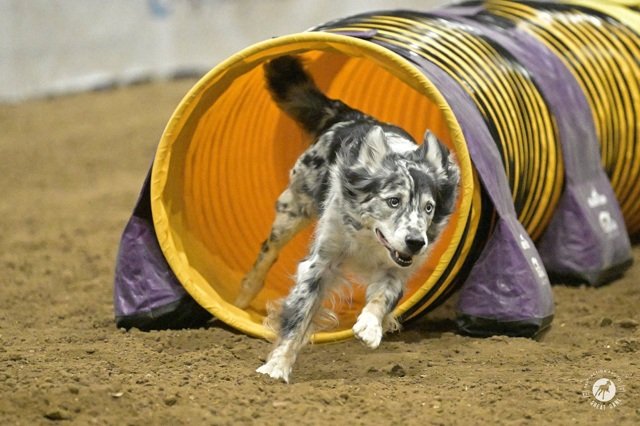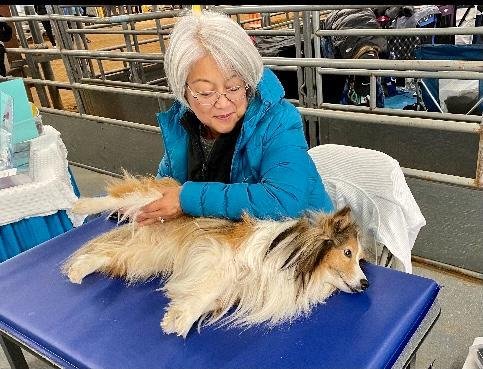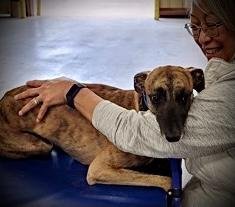addressing the needs of the canine athlete through trigger point massage
What is trigger point massage?
Trigger points develop at neuromuscular junctions within your dog’s skeletal muscle. They are the result of chronic muscle overload, repetitive strain, falls, and impact.
These hyper-irritable spots may cause referred pain (pain felt elsewhere in the dog’s body) and tenderness in that area, as well as motor dysfunction such as impaired flexibility and limited range of motion.
When trigger points are identified and proper compression is applied to them, those skeletal muscles relax, thus restoring your dog’s range of motion and flexibility.
High-energy sport dogs and companion dogs alike benefit from regular trigger point massage. Stretching, checking range of motion, and ensuring continued mobility are important for any dog, no matter what they do on a daily basis.
The long-term benefits of regular trigger point massage include:
Pain relief and release of muscle tension
Increased circulation, promoting removal of cellular waste
The release of endorphins, which gives an overall feeling of well-being
Muscle relaxation and loosening of muscle tissue
Improved mobility and range of motion
How to choose a canine trigger point therapist:
The field of canine therapy has many rules and regulations specific to location. A certified practitioner should be adequately trained to work safely with dogs and should have completed extensive coursework not only in canine trigger point, but also in canine anatomy, physiology, canine behavior and first aid. Certification through a recognized institution validates a practitioner’s expertise and commitment to adhering to the highest standards of care in the industry. A high level canine trigger point therapist often has more than a certification in just one field of canine health. Extensive education specific to canine anatomy, clinical hands-on experience and supervised practicum with experts in their field of specialization are important.
About Julianne Booth, CCMT/CTPMT
Longtime professional violinist, music educator and dog agility enthusiast Julianne Parazo Booth, CCMT/CTPMT now uses her well-trained hands and fingers for canine trigger point massage. She studied canine anatomy and physiology and earned her certifications at Rocky Mountain School of Acupressure and Massage (RMSAAM) in Littleton, CO. She went on to further her training at RMSAAM and under the tutelage of renowned human/canine/equine massage therapist Ken Bain, LMT/MTI she became certified in Advanced Canine Massage and Advanced Canine Trigger Point Massage. Read more about Julianne here.
-

"I put all my faith and trust into Julianne’s knowledge when it comes to maintaining Abby’s conditioning program. I depend on her to keep Abby in prime condition at both local and national events. With Julianne’s expertise, she is able to detect areas of concern that could potentially affect Abby’s performance."
Kathy K. + Abby
-

"Julianne is such a great therapist, very gentle with great knowledge on the trigger points. My dogs absolutely love her and I see a huge difference in my performing dogs. She has an amazing knowledge of our performing dogs and how to fix any issues that might occurs."
Sonia L + Gucci + Shadow + Angel
-

“My dogs routinely see a chiropractor, but we see Julianne at various times during the year and in preparation for big events. She has found problem areas on them I didn't know were there and has really helped me turn my older dog Surge around - enough to extend his agility career! I can't thank Julianne enough for all her help keeping my dogs in top shape!”
Robin B. + Surge
-

"My dogs Typo, Kaboom, Howie & Shelby-Cobra have all had trigger point with Julianne. These sessions are VITAL to keeping my dogs not only healthy but competing at the highest level! Julianne’s sessions with my pups are a crucial component to their athletic careers-plus they love it!"
Amber M + Typo + Kaboom + Howie + Shelby-Cobra








